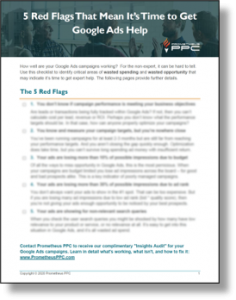How to NOT Overwhelm (and Lose) Your Website Visitors
OVERWHELMED visitors = CONFUSED visitors = LOST visitors!
This is a common website lead generation problem. And it’s hard for you, the business owner, to fix by yourself.
Why? Because you’re in love with your website content. All of it. And you want all your website visitors to read it from beginning to end and love it, too.
But they never will.
Imagine that a new prospect visits your office in person, wanting to learn what you could do for them. You greet them with:
“Welcome! Great to have you here. See that filing cabinet over there? It has all the information you’d ever want to know about us. Please look through it all and let us know if you have any questions!”

Good prospects are busy people. They have other things to do with their lives. They are wisely greedy with their time. They are impatient. And online, they are 10 times more impatient.
Visitors will not take the time to rummage through your filing cabinet of a website!
So how do you fix a filing cabinet website? How do you avoid overwhelming, confusing and losing your website visitors?
1) You need a clear USP
The first thing a new website visitor should encounter is your USP.
A Unique Selling Proposition (USP) is succinct, clear, and conveys in 5 seconds or less:
- What your business does
- Who it’s for
- How they benefit
- How you’re special
- Why they should believe you
Crafting a clear, powerful USP for your business is hard. Extremely hard. It takes time, soul-searching, and help from people who are not as close to the business as you are.
But it’s the critical first step.
If you won’t bother to figure out your USP, then why would a website visitor bother? Answer: They won’t.
And they’ll leave your website without ever understanding the wonderful things your business could have done for them.
Need help creating your USP?
>>> Download our free report and craft a powerful USP today
2) You need tough love
You love your website content. It’s innovative. It’s complete. It’s authoritative. And it’s 1,000 times better than anything your miserable competitors could ever put together.
And when your prospects read every word you’ve written from beginning to end they’ll be beating down your door, damn it!
But that’s a when that will never come.
Your website is not a book. And unless you’re in the entertainment industry your content isn’t that entertaining, either.
You must be ruthless about pruning your content.
Ask yourself:
Does this thing (sentence, paragraph, offer, video, page, …) move my ideal prospect closer to taking action with me?
If not, then it’s moving them away from action by distracting them. Move that thing elsewhere (see below) or, better yet, eliminate it.
3) You need a hierarchical website journey
Your goal is to engage new website visitors and get them to take a desired action with you. Period.
To do this, you need to spoon-feed them your content at the right level at the right time.
You can’t expect them to eat an entire course until they’ve tried the first few mouthfuls and found them to be delicious.
This means that the initial webpages your prospects see must contain only content that is absolutely delicious.
- You lead with your best morsel – your USP (see above).
- You then give the next level of detail required, which is less than you think.
- All other information, if it’s really needed, should exist in ancillary areas.
For #2, the “next level of detail required” may include other key messaging, top benefits, a brief “how it works”, handling of critical objections, support for your claims, and a clear CTA (call to action). You might put this content lower on the same page, or on a follow-up page.
For #3, “ancillary areas” include content areas such as an FAQ, a resources section, blog posts, videos, etc.
This hierarchical spoon-feeding approach is absolutely necessary to engage your ideal prospects and keeping them engaged up until the moment they complete your desired action.
But, But…
- What if my prospects need substantial education before they’ll take the next step with me?
Then make it easy for them. Determine the optimal sequence in which they should consume your information. Then set up your page flow to match it. And still be sure to relegate all non-essential info to ancillary areas of the site.
- I’m totally on board with you, Andrew, but how do I make sure to not prune too much?
Err on the side of simplicity, and then test it. Use a good analytics program like Google Analytics. If you see many visitors abandon your flow to visit your FAQ page, then maybe you need to add something important back to your flow. Visitors will also tell you what’s missing by typing it into a search box on your site. And testing your site with tools like UserTesting.com is a fantastic way to flush out any problems with clarity and intuitiveness.
- Is it okay if I give visitors multiple next steps (CTAs) to choose from on a page?
Avoid it if you can. Giving a couple of choices may not seem bad. It might even seem helpful. But it’s enough to cause confusion if not presented very carefully. And confused visitors = lost visitors. If you need to offer multiple CTAs, then make sure they are absolutely distinct offers. No ideal prospect should ever be confused about what to click next.
Conclusion
Today’s online world is overwhelming enough. Don’t add to it.
Follow the simple rules above to create a clear, focused and engaging website experience for your ideal prospects. They will thank you for it with their business.
BONUS: Hear Andrew Percey and Kenny Goodman’s live podcast discussion of How to Not Lose Your Website Visitors.


Yes, A website which delivers its clear message to the visitors is essential for every business. If the website looks confusing in itself then why visitors will bother to stay there? Visitors must find all their answers there. then only you can expect the growth in traffic.
Good advice – same applies to any marketing vehicle really – so often the key messages are lost in a sea of words, which only serves to overwhelm potential & existing clients.